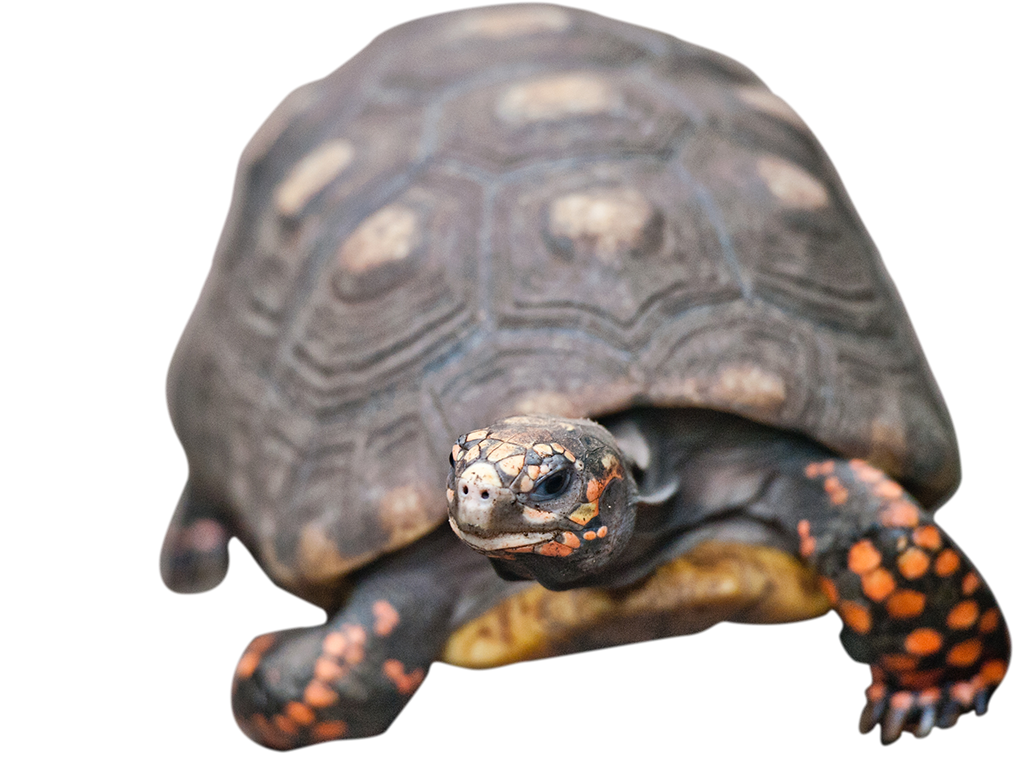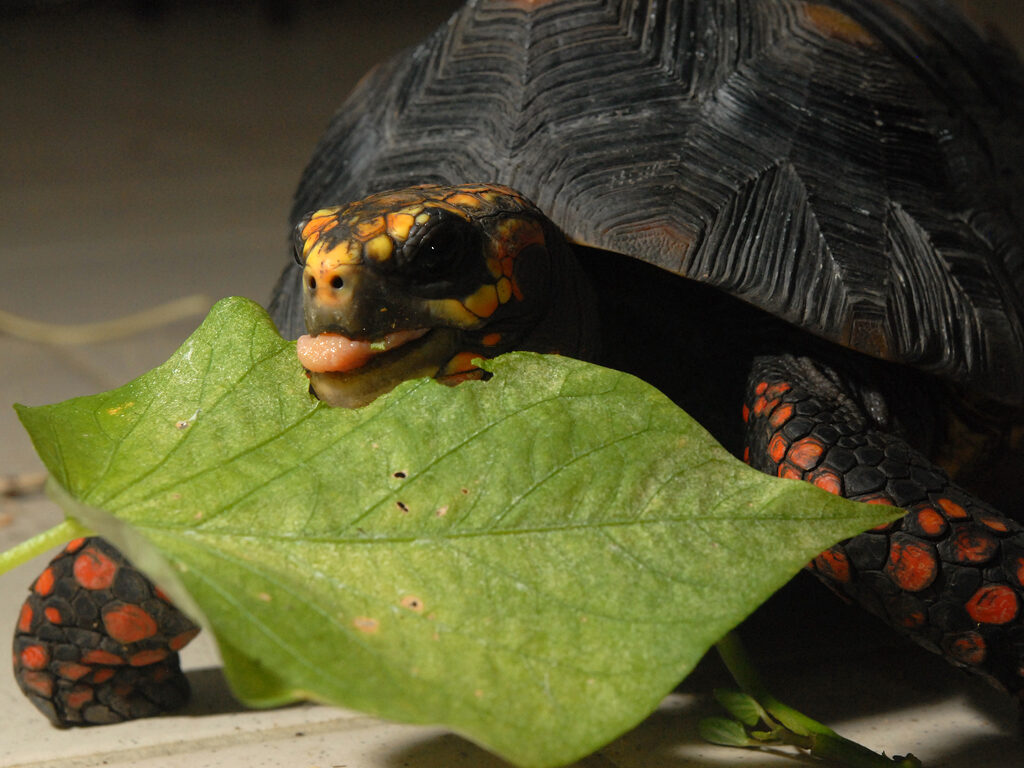Red-footed Tortoise
Chelonoidis carbonaria

Related to giant tortoises
The red-footed tortoise is a relative of the giant tortoises that live on the Galapagos Islands. Giant tortoises can weigh almost half a tonne, and live well over 100 years. Red-footed tortoises don’t get that big and old. But they can weigh up to 10 kg and live well over 50 years.
The species lives in the borderland between the forest and savannah. It can spend long periods buried in the ground, to cool itself. Suitable sites may be fallen trees or an old burrow of another animal. Many tortoises may rest together in one burrow.
The red-footed tortoise can weigh up to 10 kg.
Photo: Mark-Stevens-CC-BY-NC-SA
One of the relatives of the red-footed tortoise is the giant tortoise of the Galapagos Islands. Giant tortoises can weigh up to 200 kg.
Photo: Matthew-Field-CC-BY-SA
Wandering far after fallen fruit
The red-footed tortoise’s favourite food is fallen fruit. It can wander long distances to find the best fruit, and learns when different fruits ripen in a particular area. When the tortoise eats fruits, it also swallows seeds, which are spread over a wide area in the tortoise’s poop. So the fruit trees use the tortoises to help them colonise new sites.
The red-footed tortoise is threatened by both hunting and habitat destruction. Among some people, the species is considered a delicacy, and the tortoise meal is served in the tortoise’s own shell.

Cluck like chickens
The mating season for the red-footed tortoise is mainly in spring, during the early rainy season, but they can breed at any time of the year. Males that want to mate can become aggressive towards each other, and they dance with their heads for females to show what they want. During mating, the male makes a sound similar to a chicken clucking!
A few weeks after mating, the female starts digging a pit to lay her eggs. If the ground is hard, she may pee on it to soften it. A female gets better and better at digging and protecting her eggs as she gets older. Once she has laid the eggs, they are left to fend for themselves, and when it is time for the chicks to hatch, they make a hole in the eggshell with a special “egg tooth”.

Photo: Postdlf-CC-BY-SA
Distribution worldwide

Northern part of South America.
White maring = Distribution
Threat based on the Red List

Trade regulations
CITES: B-listed.